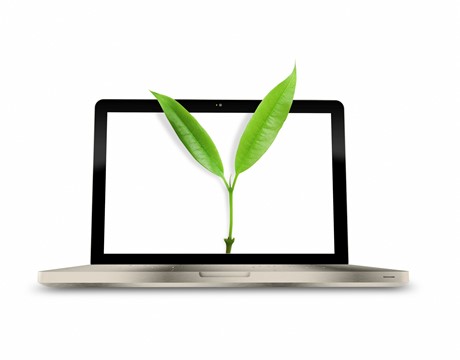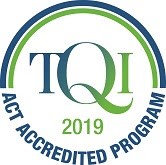
Writing a quality transition statement on ICT Capability
According to QCAA:
"Transition statements provide a snapshot of each child’s knowledge, skills and dispositions for learning across the five learning and development areas in the QKLG. Kindergarten teachers write the statements from a strengths-based perspective towards the end of the kindergarten year.
Transition statements help families to:
- understand their child’s learning progress
- share information with their child’s school to support continuity of learning."
Transition statements examples early childhood:
QKLG - Example 1, Example 2, Example 3, Example 4.
Victorian Government - Using the Transition Learning and Development Statement to inform curriculum design and delivery - A Practical Guide
When thinking about writing transition statements to do with child technology use, it is important to comment on more than whether or not children completed the technological work. You need to have conceptual and procedural technological knowledge of the children. It is for this reason, why I have provided you with transition statements examples early childhood so that you can build on this yourself.
Promoting continuity and progression in ICT use and capabilities across the different phases of education is vital if teachers are to adequately develop lifelong learners in an ICT-dominated society. The issues of continuity and progression in ICT concern the promotion of effective learning experiences throughout children’s school life.
The transition from early childhood to primary education needs to be conducted smoothly and consider the teaching styles in the different phases of education. When the induction of a child is conducted it needs to be managed so as to contribute to ICT capability rather than posing another barrier to progress.
Just as primary teachers need to make a bridge between them and secondary education, so do early childhood teachers with primary.
According to Kennewell (2000) one of the fundamental concepts underlying ICT capability is that in the phase transition, children are given “opportunities to develop and consolidate their ICT capability in school at times and outside their normal lessons.”
Preschool (NSW, Vic) & Kindergarten (Qld)
For early childhood teachers in preschool and kindergarten, ICT use is part of Outcome 4 and 5 of the Early Years Learning Framework.
The following are some transition statements examples early childhood from the Victorian Curriculum in terms of Technology use.
Outcome 4: Children are Confident and Involved Learners
- Is able to explore the purpose and function of a range of familiar tools, media, sounds and graphics (including communications technologies).
- Is beginning to explore the purpose and function of a range of familiar tools, media, sounds and graphics (including communications technologies).
- With support is beginning to explore the purpose and function of a range of tools, media, sounds and graphics (including communications technologies).
- Has little exposure or understanding of tools, media, sounds and graphics (including communications technologies).
Outcome 5: Children are Effective Communicators
- Often uses information and communication technologies to access images and information, explore diverse perspectives and make sense of their world.
- Sometimes uses information and communication technologies to access images and information, explore diverse perspectives and make sense of their world.
- With adult assistance can use information and communication technologies to access images and information, explore diverse perspectives and make sense of their world.
- Has limited experience in using information and communication technologies to access images and information, explore diverse perspectives and make sense of their world.
In Queensland, the summary of teacher information in the Transition to school statement in relation to ICT use in kindergarten might look like the following:
Outcome 4: Children resource their own learning through connecting with people, place, technologies and natural and processed materials
|
A kindergarten child who is a confident and involved learner: Explores tools, technologies and Information and Communication Technologies (ICTs) |
Child A:
|
Outcome 5: Children use information and communication technologies to access information, investigate ideas and represent their thinking
|
A kindergarten child who is an effective communicator: Identifies the uses of technologies in everyday life and use real or imaginary technologies as props in their play. Or Uses information and communication technologies to access images and information, explore diverse perspectives and make sense of their world. Or Uses information and communication technologies as tools for designing, drawing, editing, reflecting and composing. Or Engages with technology for fun and to make meaning. |
Child A:
|
Use the above in this year's transition statement.
Foundation to Year 3 Primary Teachers
For teachers in this phase of education, the information which they need to provide is more detailed and needs to adhere to the Australian Curriculum content descriptors.
In primary education, early childhood extends to Year 2 but may also extend to Year 3 in some cases. This means the level of progression is from Level 1 (Foundation) to Level 2 (Year 2). However, every individual child progresses differently to others so it is vital that you determine their capabilities in ICT accurately.
As a teacher, it would not be very helpful for the teacher you are sharing information with to simply report that a child was functioning at Level 1, for example, as this information simply states that Level 1 is the ‘best fit’, and that particular child might be functioning above or below that level in relation to one of the aspects.
You would need to provide more information and more than would be provided by reference to the level descriptors.
The information that the next year level teacher would need to know would be more than just if the child could use ICT to create, develop or organise their work. It would include:
- Which media did they have experience in doing this?
- Was it with text as in a word processor, with text and graphics as with a DTP package, with an image manipulation program (and if so, with a painting or drawing program?) It would be helpful to know which programs they had used.
Although Victoria is the only Australian state that requires teachers to report on the progress of this general capability (ICT capability) this is information that parents who are interested in this information about their child’s ICT use might like to learn.
If this is your intention, then you need to remember that parents don’t quite understand this type of information to do with the level descriptors or even if you discussed the level their child was at. You need to provide more information but phrase it in a way that would be most meaningful for the parents who do not have the same, shared vocabulary as teachers.
The above technology transition statements examples early childhood education can provide you with guidelines towards effectively writing transition statements that will enable primary teachers to build on young children's ICT capability or technology literacy proficiently thus ensuring learning progression and continuity for the children.
To learn more about transition statements and sharing them with schools, click here.
If you would like to know about ICT in Early Childhood Education, keep reading and learn how this accredited online course can help you promote a more advanced develop the child in ICT before they enter school.
Accredited Online Professional Development for Early Childhood Teachers in ICT
Completing this course will contribute to 5 hours of PD addressing 2.6.2, 4.5.2and 5.1.2 of Australian Professional Standards for Teachers towards maintaining Proficient teacher accreditation.
Teacher Takeaways
- Understand the key role of ICT in Early Childhood Education;
- Maximise formative assessments in ICT activities, projects and tasks.
- Select developmentally appropriate ICT tools;
- Employ evidence based ICT teaching strategies.
- Promote literacy and numeracy development in ICT.
- Facilitate the progression of ICT capability.
- Integrate ICT effectively in STEM activities.
- Embed safe and healthy practices.
- Reflect on your teaching and learning with ICT.
- Boost your competence in ICT integration.
- Implement a universal framework for inclusion.
